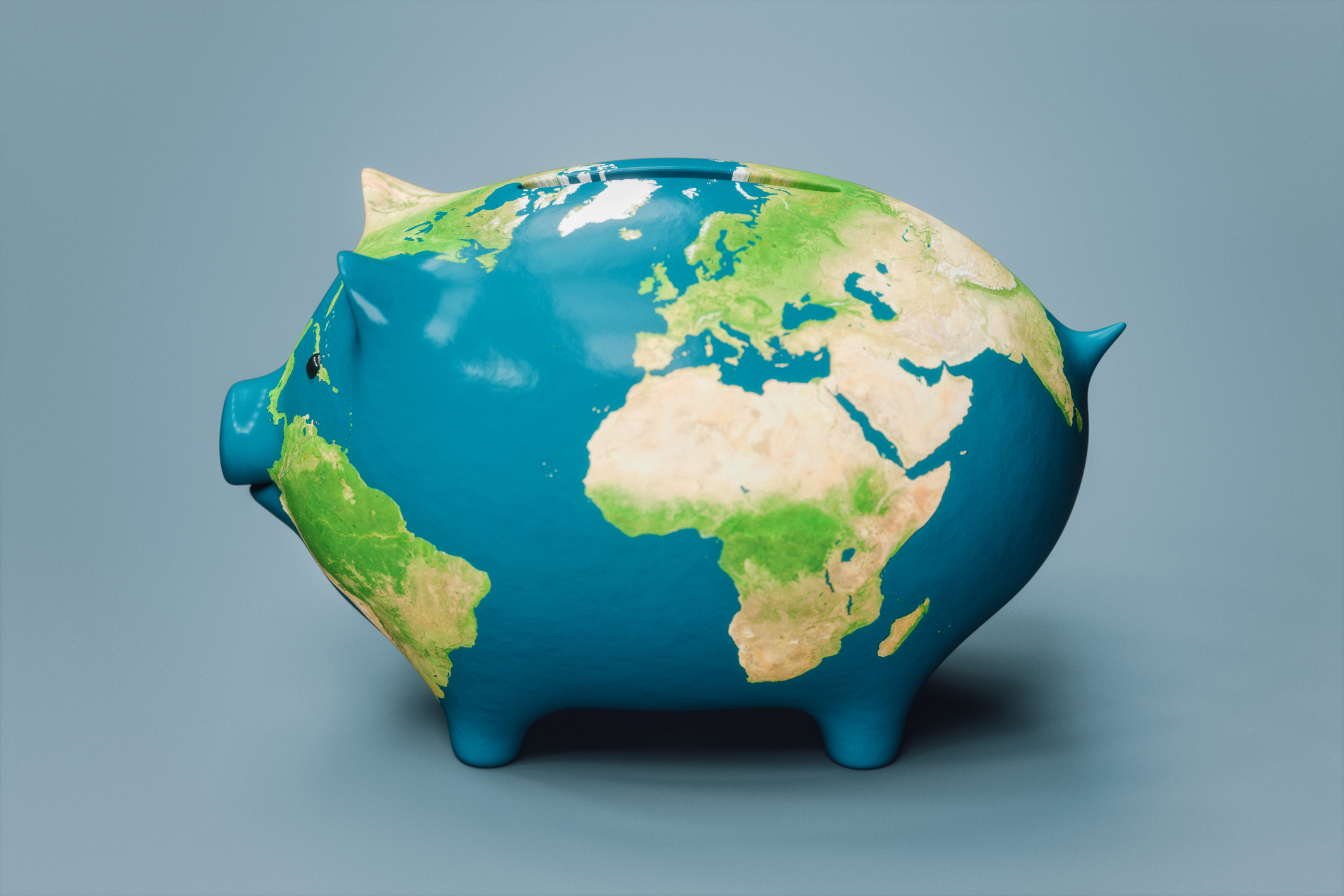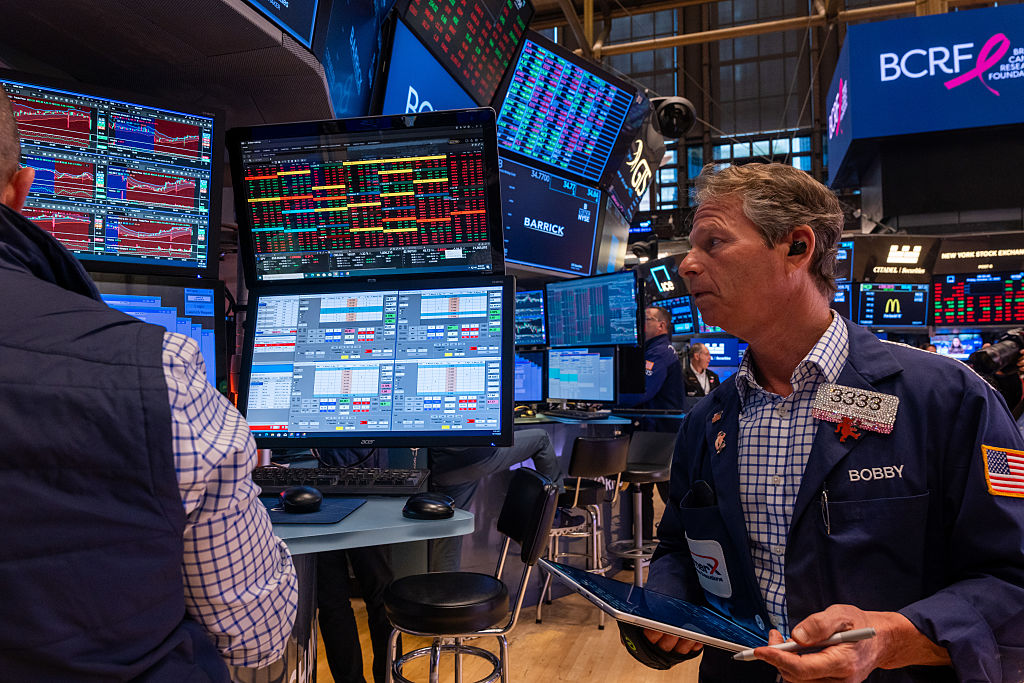Go international with Henderson International Income
The Henderson International Income trust offers a FTSE-beating yield from a global portfolio and trades on a 10% discount


If you’re hunting for income, the UK stock market is one of the best places to look. However, investors shouldn’t allow the market’s attractive dividend yields to distract them from the need for international diversification. The UK is a tiny part of the global economy and makes up less than 5% of total global equity capitalisation. And going global doesn’t have to mean sacrificing income.
A number of global equity investment trusts offer yields matching or exceeding the yield of UK equities. The average yield of trusts in the AIC Global Equity Income sector is 3.6% on a trailing twelve-month basis (TTM), compared with 3.55% for the FTSE 100.
The largest trust in the sector, with £2.9bn of assets and a TTM yield of 3.4% is JPMorgan Global Growth & Income (LSE: JGGI). It is followed by Murray International (LSE: MYI) at £1.7bn of assets and a yield of 4.6%; Scottish American (LSE: SAIN) at £1.1bn and a yield of 2.8%; Henderson International Income (LSE: HINT) at £385m and a yield of 4.7%; and STS Global Income and Growth (LSE: STS) at £309m and a yield of 2.9%.
MoneyWeek
Subscribe to MoneyWeek today and get your first six magazine issues absolutely FREE

Sign up to Money Morning
Don't miss the latest investment and personal finances news, market analysis, plus money-saving tips with our free twice-daily newsletter
Don't miss the latest investment and personal finances news, market analysis, plus money-saving tips with our free twice-daily newsletter
Why Henderson International Income has the highest yield
The highest yield here is from Henderson International Income, which has built and maintained its lead by using all the tools available to investment trusts. The company’s board has emphasised its commitment to a progressive dividend policy. Although the portfolio’s income fell by 7.5% in the last financial year, it was able to increase its dividend yield to 3.8% by drawing on its revenue reserve – surplus income retained in previous years to help it support payments in difficult years.
Trusts can also pay out income from realised capital gains rather than just relying on portfolio dividend income to maintain and grow dividends throughout the market cycle. JPMorgan Global Growth & Income leans heavily on the capital growth of its portfolio to fund its dividend and this strategy has paid off handsomely. The trust is one of the best-performing in the AIC sector, having returned around 15% annualised over the past five years on a total return basis.
Henderson International Income has taken a lesson from this. The company’s board recently updated its mandate to allow the manager to select stocks based on their growth and income potential, reducing the need for each holding to contribute to returns on an income basis. This change could lead to a meaningful adjustment in its returns in the future.
The trust also uses other trading strategies to generate additional income. These include investing in corporate bonds and writing covered call options, which have historically accounted for 4%-10% of the company’s cash available for distribution in dividends.
Trading at a discount
Back in 2019, Henderson International Income traded at a small premium to net asset value (NAV), but the discount has blown out since mid-2023. It hit a record of 15% towards the end of 2023, although it is back to around 10% at present.
This discount, combined with the sector-leading yield, makes the trust look attractive at current levels. The underlying portfolio is trading at a forward price-to-earnings (p/e) of 14.7, according to broker Panmure Liberum. However, after factoring in the current NAV discount, analysts reckon the valuation falls to 13.3. The trust’s holdings have the potential to deliver earnings growth of 10.4% for the year ahead, based on analysts’ consensus forecasts.
Most of the growth will come from its allocation to tech, which has grown from around 7.5% of the portfolio in 2023 to 20% at the end of its 2024 fiscal year, a move enabled by the change in investment strategy. The largest holding in the portfolio is now Microsoft, and the US has the largest country weighting, at just over 37%. France is second at 13%, helped by a position of 3.8% in pharma group Sanofi.
This article was first published in MoneyWeek's magazine. Enjoy exclusive early access to news, opinion and analysis from our team of financial experts with a MoneyWeek subscription.
Get the latest financial news, insights and expert analysis from our award-winning MoneyWeek team, to help you understand what really matters when it comes to your finances.

Rupert is the former deputy digital editor of MoneyWeek. He's an active investor and has always been fascinated by the world of business and investing. His style has been heavily influenced by US investors Warren Buffett and Philip Carret. He is always looking for high-quality growth opportunities trading at a reasonable price, preferring cash generative businesses with strong balance sheets over blue-sky growth stocks.
Rupert has written for many UK and international publications including the Motley Fool, Gurufocus and ValueWalk, aimed at a range of readers; from the first timers to experienced high-net-worth individuals. Rupert has also founded and managed several businesses, including the New York-based hedge fund newsletter, Hidden Value Stocks. He has written over 20 ebooks and appeared as an expert commentator on the BBC World Service.
-
 Investors will reap long-term rewards from UK equities
Investors will reap long-term rewards from UK equitiesOpinion Nick Train, portfolio manager, Finsbury Growth & Income Trust, highlights three UK equities where he’d put his money
-
 The graphene revolution is progressing slowly but surely
The graphene revolution is progressing slowly but surelyEnthusiasts thought the discovery that graphene, a form of carbon, could be extracted from graphite would change the world. They might've been early, not wrong.
-
 A strong year for dividend hero Murray International – can it continue its winning streak?
A strong year for dividend hero Murray International – can it continue its winning streak?Murray International has been the best-performing global equity trust over the past 12 months, says Max King
-
 A reckoning is coming for unnecessary investment trusts
A reckoning is coming for unnecessary investment trustsInvestment trusts that don’t use their structural advantages will find it increasingly hard to survive, says Rupert Hargreaves
-
 Literacy Capital: A trust where great returns fund a good cause
Literacy Capital: A trust where great returns fund a good causeThere’s plenty to like about specialist private-equity trust Literacy Capital, says Max King
-
 How to harness the power of dividends
How to harness the power of dividendsDividends went out of style in the pandemic. It’s great to see them back, says Rupert Hargreaves
-
 Tetragon Financial: An exotic investment trust producing stellar returns
Tetragon Financial: An exotic investment trust producing stellar returnsTetragon Financial has performed very well, but it won't appeal to most investors – there are clear reasons for the huge discount, says Rupert Hargreaves
-
 How to capitalise on the pessimism around Britain's stock market
How to capitalise on the pessimism around Britain's stock marketOpinion There was little in the Budget to prop up Britain's stock market, but opportunities are hiding in plain sight. Investors should take advantage while they can
-
 The consequences of the Autumn Budget – and what it means for the UK economy
The consequences of the Autumn Budget – and what it means for the UK economyOpinion A directionless and floundering government has ducked the hard choices at the Autumn Budget, says Simon Wilson
-
 Profit from a return to the office with Workspace
Profit from a return to the office with WorkspaceWorkspace is an unloved play on the real estate investment trust sector as demand for flexible office space rises